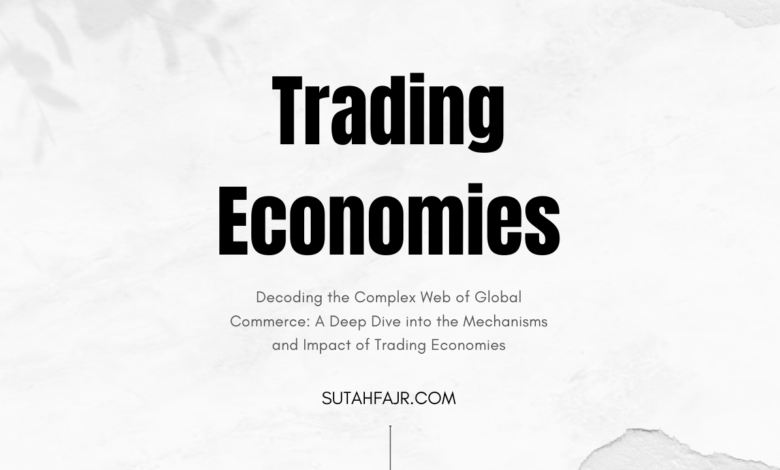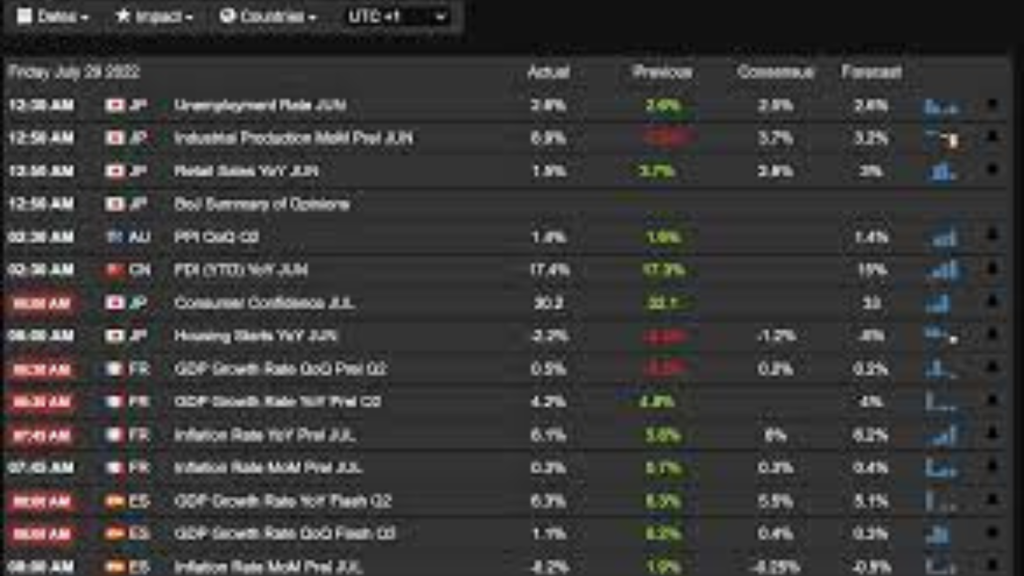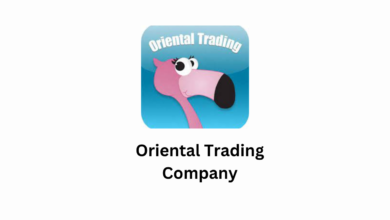Trading Economies
Decoding the Complex Web of Global Commerce: A Deep Dive into the Mechanisms and Impact of Trading Economies

Trading Economies
A trading economy, also known as an open economy, actively engages in international trade, exchanging goods, services, and capital with other nations.

Introduction
Trading economies play a pivotal role in the global economic landscape, serving as the engines that drive international commerce and exchange. These economies are intricate systems where goods, services, and capital flow seamlessly across borders, shaping the interconnected world we live in. In this article, we will delve into the fundamental aspects of trading economies, exploring their characteristics, mechanisms, and the impact they have on the global economic stage.
Definition and Characteristics
A trading economy, also known as an open economy, is one that actively engages in international trade. Unlike closed economies that rely primarily on domestic production and consumption, trading economies leverage global markets to enhance efficiency, foster innovation, and meet diverse consumer needs.
Key characteristics of trading economies include:
- International Trade: The hallmark of a trading economy is its active participation in international trade. This involves the exchange of goods, services, and capital with other nations, creating a network of interconnected markets.
- Comparative Advantage: Trading economies often operate based on the principle of comparative advantage. This economic theory posits that countries should specialize in the production of goods and services where they have a relative efficiency or cost advantage, leading to increased overall productivity.
- Foreign Exchange Markets: The currency exchange is a crucial component of trading economies. Nations actively participate in foreign exchange markets, where currencies are bought and sold, impacting exchange rates and influencing trade balances.
- Global Supply Chains: Trading economies are integral to global supply chains. Companies source components and raw materials from various countries, creating intricate networks that span continents.
Also Check
Mechanisms of Trading Economies
Several mechanisms drive the functioning of trading economies:
- Tariffs and Trade Agreements: Nations often employ tariffs, taxes on imported goods, to protect domestic industries. Simultaneously, they negotiate trade agreements to facilitate smoother exchange and reduce trade barriers.
- Balance of Payments: The balance of payments reflects a country’s economic transactions with the rest of the world. It includes the trade balance, capital flows, and financial transfers, providing insights into the economic health of a nation.
- Currency Exchange Rates: Exchange rates determine the value of one currency in terms of another. Fluctuations in exchange rates impact the competitiveness of exports and imports.
- Specialization and Division of Labor: Trading economies thrive on specialization, where countries focus on producing goods and services for which they have a comparative advantage. This leads to a division of labor, increasing overall efficiency.
Impact on Global Economy
Trading economies exert a profound influence on the global economic landscape:
- Economic Growth: Active participation in international trade often spurs economic growth by providing access to larger markets and fostering innovation through competition.
- Diversification of Resources: Trading economies benefit from access to a diverse range of resources, reducing dependence on a limited set of inputs and enhancing resilience.
- Global Interconnectedness: The interdependence of trading economies fosters diplomatic and political ties, creating a global community where geopolitical considerations are intertwined with economic interests.
- Challenges and Inequalities: While trading economies bring about numerous benefits, they also pose challenges, including income inequality, job displacement, and vulnerability to global economic downturns.
Conclusion
Trading economies serve as the linchpin of the global economic order, connecting nations and driving prosperity through international exchange. As countries continue to navigate the complexities of international trade, the dynamics of trading economies will evolve, shaped by technological advancements, geopolitical shifts, and the ongoing pursuit of economic development. Understanding the mechanisms and impact of trading economies is essential for policymakers, businesses, and individuals alike as they navigate the intricacies of the interconnected world economy.

FAQs About Trading Economies
What is a trading economy?
A trading economy, also known as an open economy, actively engages in international trade, exchanging goods, services, and capital with other nations.
How does comparative advantage work in trading economies?
Comparative advantage in trading economies is the principle where countries specialize in producing goods and services where they have a relative efficiency or cost advantage, leading to increased overall productivity.
What role do tariffs play in trading economies?
Tariffs are taxes on imported goods. They can be used in trading economies to protect domestic industries or as negotiating tools in trade agreements.
How do currency exchange rates impact trading economies?
Exchange rates determine the value of one currency in terms of another, influencing the competitiveness of exports and imports in trading economies.
What is the balance of payments in the context of trading economies?
The balance of payments reflects a country’s economic transactions with the rest of the world, including trade balances, capital flows, and financial transfers, providing insights into its economic health.
How do trading economies contribute to global interconnectedness?
Trading economies create a global community by fostering diplomatic, political, and economic ties, leading to increased global interconnectedness.
What are the benefits of participating in global supply chains for trading economies?
Trading economies benefit from global supply chains by gaining access to diverse resources, reducing dependence on limited inputs, and enhancing resilience.
What challenges do trading economies face?
Challenges in trading economies include income inequality, job displacement, and vulnerability to global economic downturns.
How does specialization and the division of labor contribute to the success of trading economies?
Specialization in trading economies allows countries to focus on producing goods and services where they excel, leading to increased efficiency through the division of labor.
How can individuals and businesses navigate the complexities of trading economies?
Understanding the mechanisms and impact of trading economies is essential for individuals and businesses to navigate the complexities of international trade, making informed decisions in the interconnected world economy.






